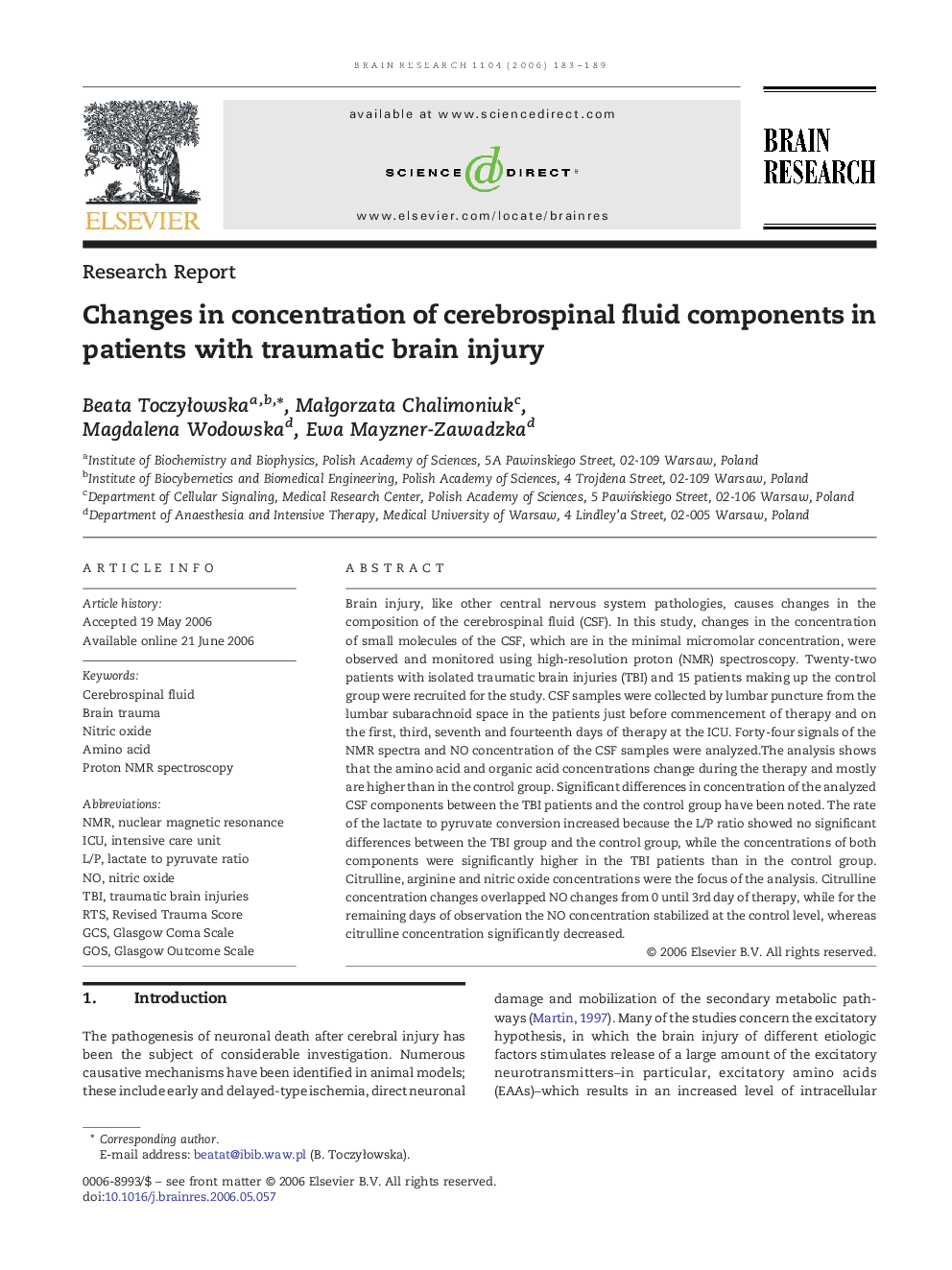| Article ID | Journal | Published Year | Pages | File Type |
|---|---|---|---|---|
| 4332421 | Brain Research | 2006 | 7 Pages |
Brain injury, like other central nervous system pathologies, causes changes in the composition of the cerebrospinal fluid (CSF). In this study, changes in the concentration of small molecules of the CSF, which are in the minimal micromolar concentration, were observed and monitored using high-resolution proton (NMR) spectroscopy. Twenty-two patients with isolated traumatic brain injuries (TBI) and 15 patients making up the control group were recruited for the study. CSF samples were collected by lumbar puncture from the lumbar subarachnoid space in the patients just before commencement of therapy and on the first, third, seventh and fourteenth days of therapy at the ICU. Forty-four signals of the NMR spectra and NO concentration of the CSF samples were analyzed.The analysis shows that the amino acid and organic acid concentrations change during the therapy and mostly are higher than in the control group. Significant differences in concentration of the analyzed CSF components between the TBI patients and the control group have been noted. The rate of the lactate to pyruvate conversion increased because the L/P ratio showed no significant differences between the TBI group and the control group, while the concentrations of both components were significantly higher in the TBI patients than in the control group. Citrulline, arginine and nitric oxide concentrations were the focus of the analysis. Citrulline concentration changes overlapped NO changes from 0 until 3rd day of therapy, while for the remaining days of observation the NO concentration stabilized at the control level, whereas citrulline concentration significantly decreased.
